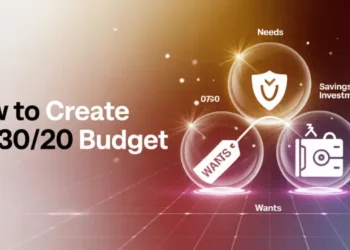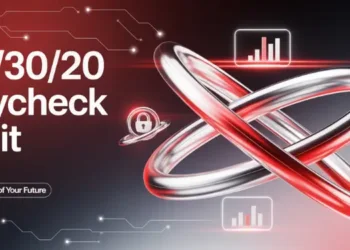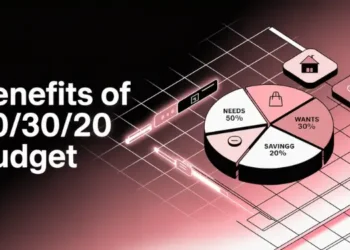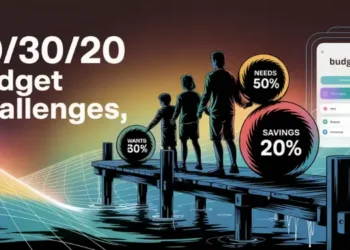Learning to automate your budget is like navigating a sailboat. We make sure every dollar goes to the right place.
Ever wonder how a simple ratio can ease money worries? Recent surveys indicate that many individuals save less than 10% of their monthly income. A local credit union says one step can bring real stability. By allocating funds into separate categories, I successfully eliminated $80,000 in debt.
Quick hits
- Tally income in real time
- Direct cash to specific tasks
- Plan split for balanced life
- Prevent untracked shopping sprees now
Choose Banking Tools That Trigger Transfers

Time to pick a platform that helps us manage our money. We’ll find apps or credit union software that move our cash around. Studies show small transfers can help us save for big goals.
Consumers using automated “round-up” and guaranteed savings rules via mobile apps saw average savings increases of $114–$217 per month. Ref.: “Consumer Financial Protection Bureau. (2022). Consumer Savings App Strategies and Savings Outcomes. Consumer Financial Protection Bureau.” [!]
Compare App Rules For Percentage Splits
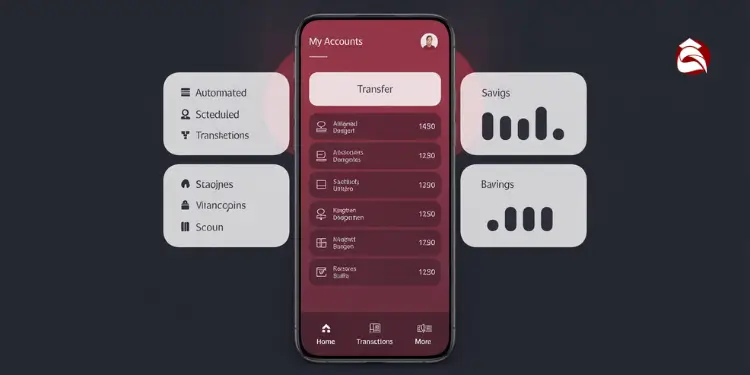
Many tools let us split our money into parts. We can put 50% toward bills, 30% for fun, and 20% into savings. Others have sliders or custom ratios for our needs.
Try a few apps with budgeting tools to find the best fit. See which way of splitting keeps you on track.
Mobile banking platforms with smart automated transfers and multiple-goal features increase user savings by up to 20% and boost goal completions by over 50%. Ref.: “Financial Health Network. (2022). Building Consumer Savings with Fintech Innovations. Financial Health Network.” [!]
Link Paychecks For Same Day Movement
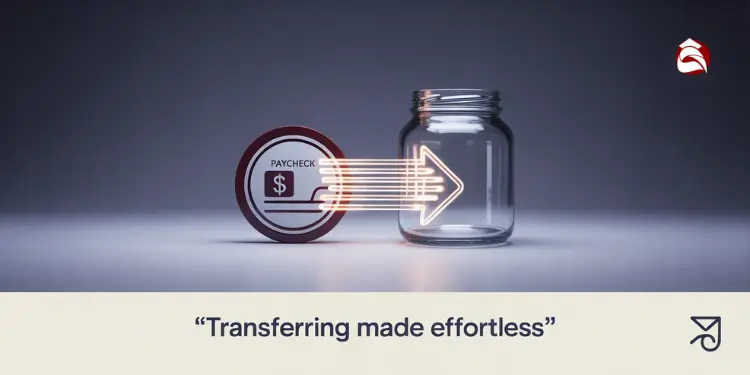
Credit unions like Pine Coast Bank let us move paychecks right away. This helps us avoid spending too much. We can set up direct deposit to save first.
Stopwatch 30-second action: Open your banking dashboard and find “auto-transfer.” Turn it on to move part of your paycheck. For tips on 50/30/20 or saving first, visit this guide and keep your money in order.
Setting up split direct deposit often requires employer approval and can take 1–2 pay cycles to become active, delaying automated transfers. Ref.: “Luxwisp. (2025). How Long Does It Take To Change Direct Deposit? Luxwisp.” [!]
Set Paycheck Splits For Needs Wants Savings
Think of your budget as a well-organized system, where each category serves a specific purpose. It keeps the catch organized. We can do the same with our money. By dividing it into needs, wants, and savings, we avoid money problems.
Read More:
Using Take Home Income
First, add up what you get after taxes. This is your money to spend. We usually save half for important bills like rent and food.
Then, about thirty percent goes for fun. The last bit helps grow savings or pay off debts. For example, if you make $3,200 a month, you save $1,600 for basics, $960 for fun, and $640 for savings. This way, we manage our spending well.
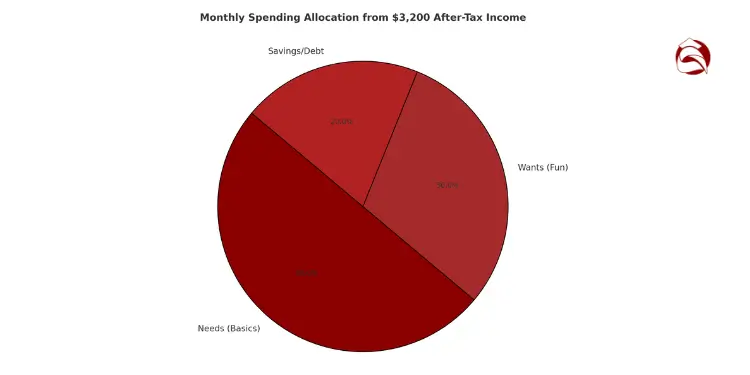
Adjust Caps When Income Fluctuates Unexpectedly
More work or side jobs mean more money. It’s a good time to spend more on fun or save more. But if money gets less, we can spend less too. Our money plans can change with our income.
Stopwatch 15-second action: Write three columns—Needs, Wants, Savings—then assign exact dollar amounts from your last paycheck.
“Discover More: 50/30/20 budget breakdown of needs, wants, and savings“
Automate Bill Payments To Protect Core Bills
Imagine stepping onto a Maine pier with all your essentials. These include rent, light, and heat. We make sure these are the first things we take care of, so they don’t get lost.
By setting up automatic payments, we avoid missing due dates. This helps us avoid extra charges.
Prioritize Housing Utilities Transportation First
These are the things we need every day. A place to live, power, and a way to travel are more important than anything else. Local credit unions say paying rent quickly can save a lot of money.
We keep our spending in check, even for fun. But, we make sure our big bills are paid first. The data shows we can afford to spend on dining out or hobbies. But, our important bills always come first.
Schedule Dates To Match Payroll Cycles
Setting up auto-payments right after we get paid helps keep our money flowing. Many families in Maine choose specific days after payday for their big bills. This keeps everything in sync with our paychecks.
Try these steps:
- Open your bank’s online Bill Pay tool.
- Select your top-priority bills: housing, utilities, and transit.
- Assign auto-draft dates that match your payroll schedule.
Stopwatch 20-second action: Change each payment date now. Make sure your important bills are paid before any extra spending can take your money.
Create Buffer Account For Seasonal Expenses
Local boat captains in Maine keep spare parts ready for storms. We need a safety net for big expenses like tire swaps and holidays. A special buffer helps us avoid unexpected costs.
Preload Holidays Vacations Vehicle Repairs Ahead
Save a little each payday for big expenses. A study showed saving $20 weekly can reduce stress by 30%. Saving regularly helps avoid big bills in hard months.
“Further Reading: 50/30/20 vs 60/30/10 budget full comparison guide“
Use Separate Bank Nicknames For Clarity
Use special names for important funds. Names like Travel Pot or Snow Tire Stash help keep money right. This keeps your main account safe from holiday spending.
[Stopwatch 25-second action]: Open a new sub-account online. Pick a name for your goal, then set a small transfer each payday. Keep your seasonal costs in line.
“Related Topics: 50/30/20 budget basics for first time budgeters“
Track Automation Results With Monthly Dashboards
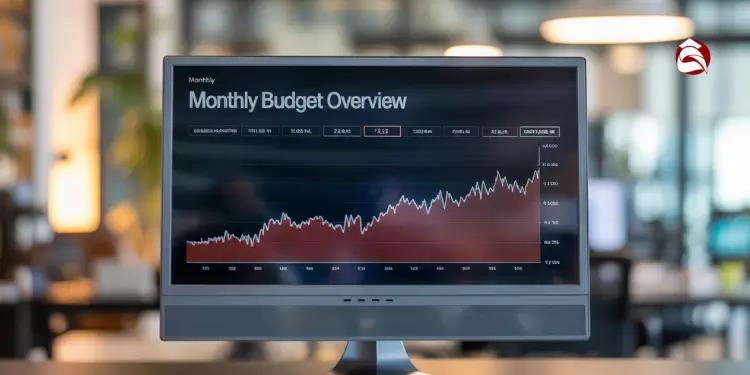
Imagine a skipper checking nautical charts every month. This is like us checking if we’re meeting our goals. We aim for 50% for needs, 30% for wants, and 20% for future plans.
If our income changes, we adjust our budget. This keeps us on the right path.
Some people spot problems quickly. According to a 2024 Bankrate survey, 62% of Americans feel behind on emergency savings, with only 20% having more saved now than at the start of the year. Monthly checks help keep our money safe.
According to Bankrate’s 2024 Emergency Savings Survey, 62% of Americans feel behind on their emergency savings and only 20% have more saved now than at the start of the year—underscoring the importance of regular budget reviews. Ref.: “Bankrate. (2024). Survey: 62% of Americans feel behind on emergency savings. Bankrate.” [!]
Spot Drifts And Rebalance Within Minutes
We look at any money issues after bills are paid. A quick check shows if we’re off track. This tells us to make changes.
We adjust our spending until everything looks right. This keeps our money flowing smoothly.
Celebrate Milestones To Stay Motivated
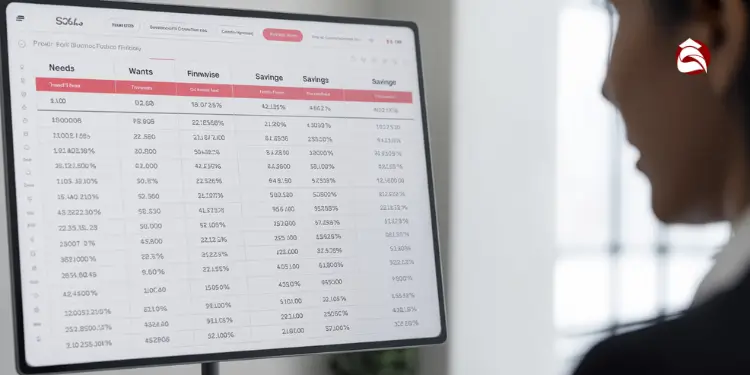
We celebrate when we pay off debt or grow our emergency fund. A small treat, like a family night, keeps us going. This 50/30/20 rule helps us stay on track without stress.
Stopwatch 15-second action: Set a 10-minute reminder each month. This quick check saves us from big problems later.
“Read More: The 50/30/20 budget calculator for quick planning and spending balance“
Fix Common Automation Errors Before Damage
Even the strongest sloop needs regular checks. I once faced $80k debt, so I learned to watch automation closely. Double transfers can empty your account, and new bank rules might mess up your plans.
We follow the Federal Reserve’s 50/30/20 plan to manage our money. It means 30% for fun and 50% for needs. Experts say quick fixes keep your money safe.
Catch Duplicate Transfers Draining Paycheck Faster
Extra transfers can sneak up on us, like when we’re busy. A sudden drop in our checking might mean we’ve made a mistake. We check our transactions monthly and confirm each transfer.
We also keep a little extra money to avoid overdrafts. This way, we protect our budget, including 30% for fun, as suggested by this 50/30/20 guideline.
“Related Articles:
Update Rules After Bank Policy Changes
Changes in bank fees or direct deposit rules can mess up our plans. We update our settings when our bank changes things. This keeps our money moving smoothly.
By catching these issues early, we keep our budget balanced. Just a quick email or alert from the bank can help us stay on track.
Stopwatch 20-second action: Log in, check each auto-transfer, and make sure they match the bank’s new rules. This simple step keeps your finances steady.



